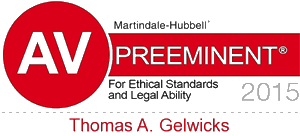Seatbelts Can Cause Major Injury
Seat harness systems are responsible for saving many American lives. Paradoxically, however, harnesses also inflict major injuries. About 16,000 people die – each year in the United States – as a result of chest injuries. About 25% of these are related to specific thoracic injuries.
It is not uncommon for lung pain to result from the occupant’s body being thrust against the restraint system. In severe impacts, if the membranes of the lungs are punctured, then pneumothorax can be expected to occur. This is because fractured ribs poke through the lungs, leading to respiratory collapse. If serious or untreated, death can result.
Cardiac trauma can also result from a car collision of true force. There can be severe contusion, created in a fraction of a second, when the person’s body is forcefully slammed into the automatic tightening of the belt.
If the chest strikes a harder surface, such as the steering wheel, the trauma can cause costochrondritis. Usually the ribs or cartilage of the chest are involved in a significant way. Inflammation results, producing pain at the upper chest, at the front near the sternum. This extremely painful condition can be found along with swelling and redness. It is known as Tietze’s Syndrome.
Chest Wall Trauma
Many people involved in car collisions suffer chest wall injury, where the sternum lies at the middle part of the chest. This is the area of the body between the lower part of the neck and the upper area of the abdomen. Involved anatomical parts also include the ribs, the thoracic vertebrae and costal cartilage which are made up of fibrous tissue.
Life squad paramedics and ER providers are always alert to the nature and degree of chest injuries. They can include damage to organs including internal bleeding. If the kidneys, spleen or liver are possibly ruptured, ER monitoring will be extremely rigorous. There is a real danger that a broken rib punctured an organ.
One of the most upsetting aspects of these injuries is that it is difficult to know what to expect for days after the event. Because of the multiple and interrelated organs, there are many unanswered questions in the ER and trauma center. This results in difficulty as to providing clarification related to diagnosis and treatment – when time is of the essence. Admission is often necessary. If a collapsed lung has been suffered, a chest tube will be inserted.
A ruptured abdominal aorta can easily be overlooked, causing a host of serious problems. This could be the result of blunt trauma – through impact with the shoulder harness, steering wheel, air bag or some part of the car interior.
Damaged Ribs
The 12 pairs of bones which make up the ribs are very vulnerable to blunt impact. All of the ribs are curved and of unequal length. The “true ribs” are the top seven. Costal cartilage works to attach these ribs to the breastbone, also known as the sternum. The ribs known as “false” are those numbered 8 through 10, and they are separate from the breastbone. Most people are familiar with those numbered 11 and 12. These are known as the “floating ribs.”
Ribs are not easily broken, and it takes a major amount of energy transfer to cause that variety of injury to the occupant of a vehicle. Anyone who has suffered rib pain knows it is painful and long in healing. Physicians can do little beyond recommending patience during the unusually long recovery.
The crushing nature of the chest wall, even without rib fracture, creates severe bruising that can affect multiple organs. Pulmonary dysfunction sometimes results from severe chest contusion. Often this is not picked up by x-rays.
Emergency room personnel are well-trained to evaluate chest symptomatology carefully. Subtle indicators of significant, underlying trauma can be concealed. Certainly rib fractures can suggest tearing at the spleen or the diaphragm. Any presence of blood will almost certainly result in the patient being admitted for further examination. When fractures involve the sternum as well as the ribcage, it is difficult for the patient to move at all or even just breathe.

